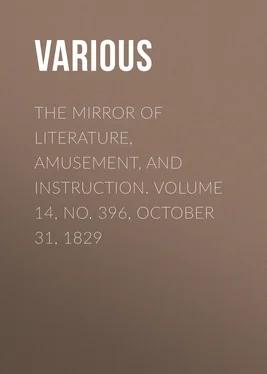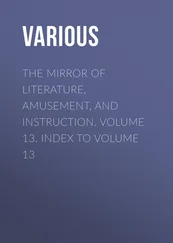Interspersed with the emanations of our existing bards, we have, occasionally, those precious morceaux which have been bequeathed us by the illustrious dead. Trifles, yet how esteemed! Remembrances of Byron, with his fiery impetuosity, spurning the trammels of worldly sorrow; and prescribing death as a panacea for his lamentable despair; yet subduing us with refined regrets, as he was wont, in his changing mood,
"To sun himself in heaven's pure day."
Shelley, misanthropically commencing with the turbulence of the chainless sea: a spirit matured to madness by the overawing and supernatural terrors of German romance: as he asserts himself to be, in his lamentation for the author of Endymion, one who
"Had gaz'd on Nature's naked loveliness,
Acteon-like, until he fled away ."
John Keates, forsaking the land of his fame, and prematurely resigning his "quiet breath," on that spot
"Where dwelt the muses at their natal hour;"
leaving to the less sensitive reviewers to prove, whether he had been "led astray by the light from heaven, or by his own clouded and tempestuous genius:"
"That fire within so fiercely burned
That whence it came it soon returned."
Maturin, though corrupted and enervated by the follies and dissipation of the anti-poetic city, becoming, in his lucid intervals, "himself again," in the composition of a splendid dramaticle.—Henry Neele, the "martyr-student," inviting us to share in the intense admiration of intellect; forcibly demonstrating "that song is but the eloquence of truth"—but of him no more!
"The churchyard bears an added stone;
The fireside shows a vacant chair."
Yet, however splendid the galaxy of literary stars may be, which illumine our Annuals, they owe no little of their lustre to the engravings . It fortuitously happens that we have not "a connoisseuring eye," or we should swell this paper beyond the limits prescribed by editorial complaisance, in the pages of "THE MIRROR." We are not ignorant, however, of the incomparable advancement which the science of engraving has made in the lapse of the last ten years; or how far it has left behind those mere scratches of the graver which lit up our young admiration when a boy. Two of these we will be impertinent enough to criticise, in spite of the affection with which we cherish the visionary recollection of the pictures of grandmother's parlour. The subjects were "courtship," and "matrimony." In the former, the Chesterfieldian lover was seen handing his chere amie (a lusty wench, with red ochre cheeks) over a remarkably low stile: whether the subject, or the manner of its execution had inspired the muse, is no matter; but beneath was the following:—
"In courtship , Strephon careful hands his lass
Over a stile a child with ease might pass"
The next was "matrimony;" but, oh! "look on this picture and on this! " The careless husband, forgetting his capacious spouse, leaves her to scramble over a stile of alarming altitude, whilst his attention seems absorbed in the quarrel of two snarling terriers. Such conjugal uncourtliness elicits its merited censure in the cool satire of the accompanying motto:—
Конец ознакомительного фрагмента.
Текст предоставлен ООО «ЛитРес».
Прочитайте эту книгу целиком, купив полную легальную версию на ЛитРес.
Безопасно оплатить книгу можно банковской картой Visa, MasterCard, Maestro, со счета мобильного телефона, с платежного терминала, в салоне МТС или Связной, через PayPal, WebMoney, Яндекс.Деньги, QIWI Кошелек, бонусными картами или другим удобным Вам способом.
Researches in the South of Ireland, Illustrative of the Scenery, Architectural Remains, and the Manners and Superstitions of the Peasantry. By T. Crofton Croker. 4to. 1824 Murray. VOL. XIV.
This tomb, according to Archdall's "Monasticon Hibernicum," stood in the middle of the choir of Kilcrea Abbey, with the following inscription:—
HIC. IACET. CORMACVS. FIL. THADEI. FIL. CORMACI. FIL. DERMITII. MAGNI. MC. CARTHY. DNVS DE. MVSCRAIGH. FLAYN. AC. ISTIVS. CONVENTVS. PRIMVS. FVNDATOR. AN. DOM. 1494.
The original name of a sept or clan was Carty, supposed to be derived from Cartheigh, which signifies an Inhabitant of the Rock; and Mac, denoting " son of ;" was used before the father's Christian name for the purpose of distinction, as, Mac Cormac Carty expressed Carty, son of Cormac; this manner of designation appears discontinued on the introduction of a greater variety of names, and the Mac alone retained by the elder branches.
Amongst the Harleian MSS. the Vol. No. 1425, contains pedigrees of Irish nobility; from the ninth to the twenty-second page is occupied by those of "Mac Cartie More," Mac Cartie Reagh, and all other Mac Carties, brought down to the year 1615; but though curious for reference, there is little worth the trouble of transcribing. The most common female names in the Mac Carty pedigree are, Katheren, Elin, Honnor, Joan, and Grany.












